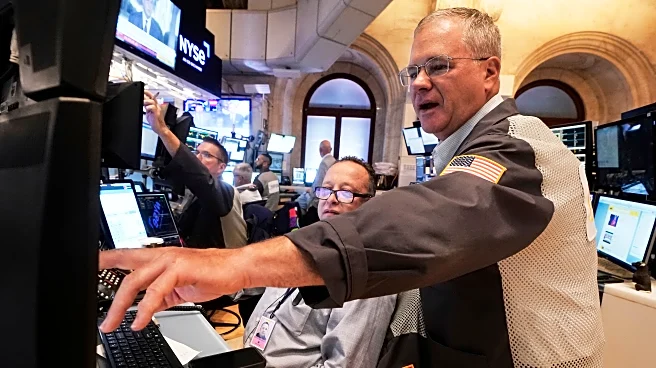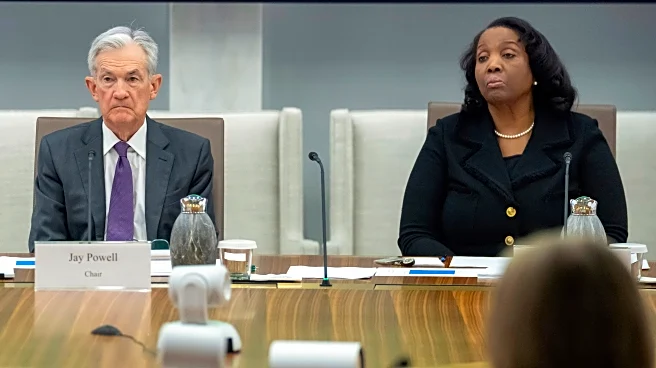What is the story about?
What's Happening?
The Federal Reserve is signaling potential interest rate cuts, as indicated by Fed Chair Jerome Powell at the Jackson Hole symposium. Despite market optimism, Powell cautioned that the long-term neutral rate might be higher than previously expected. The average 30-year mortgage rate is currently around 6.7%, significantly higher than the near 3% rates seen in 2021. President Trump has been advocating for a reduction in rates to 1%, criticizing Powell for negatively impacting the housing industry. However, the Fed's focus remains on balancing inflation and unemployment, with current economic conditions showing a slowdown in consumer spending and GDP growth.
Why It's Important?
The potential rate cuts by the Federal Reserve could have significant implications for the U.S. economy, particularly in the housing market where high mortgage rates have been a barrier for many buyers. Lower rates could stimulate economic activity by making borrowing cheaper, potentially boosting consumer spending and investment. However, the Fed's cautious approach reflects concerns about inflation and the overall stability of the economy. The outcome of these policy decisions will be closely watched by businesses, investors, and policymakers, as they navigate the complex economic landscape shaped by recent trade policies and global market dynamics.
What's Next?
The Federal Reserve's next steps will likely involve careful monitoring of economic indicators to determine the appropriate timing and magnitude of rate cuts. Stakeholders, including businesses and consumers, will be anticipating these decisions, which could influence market confidence and economic growth. The Fed's actions will also be scrutinized in the context of President Trump's trade policies, which have introduced additional economic uncertainties.
AI Generated Content
Do you find this article useful?












